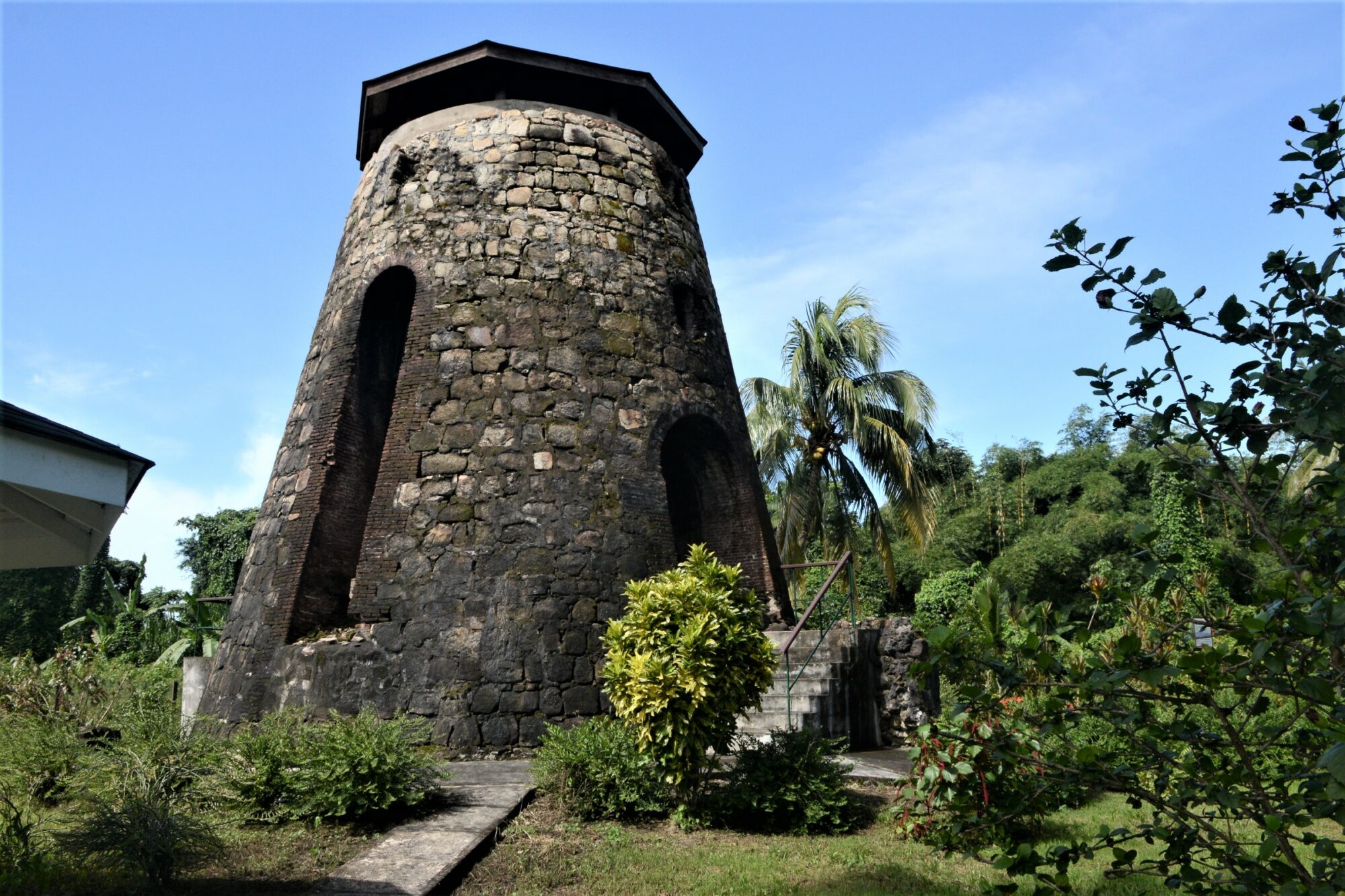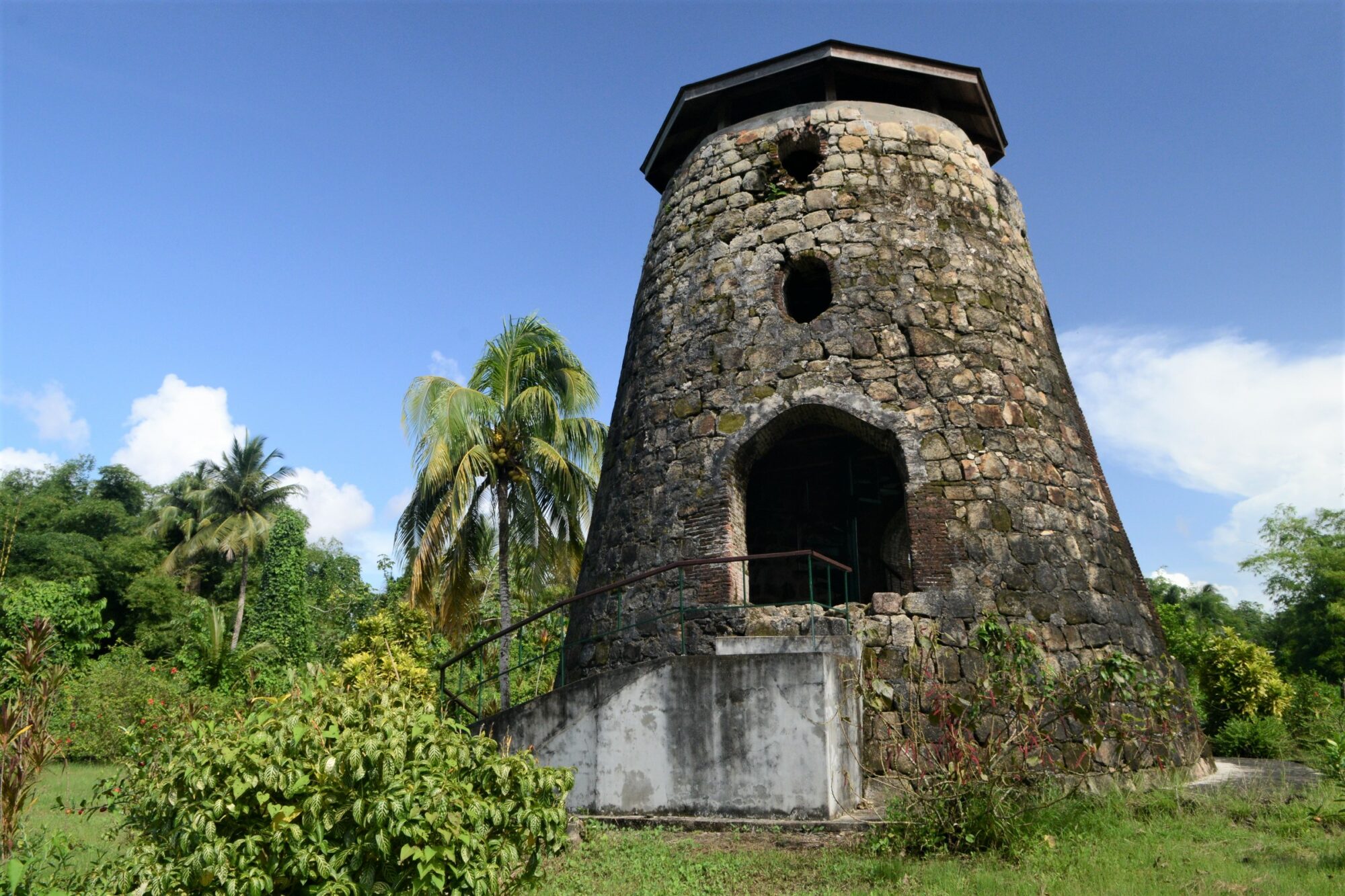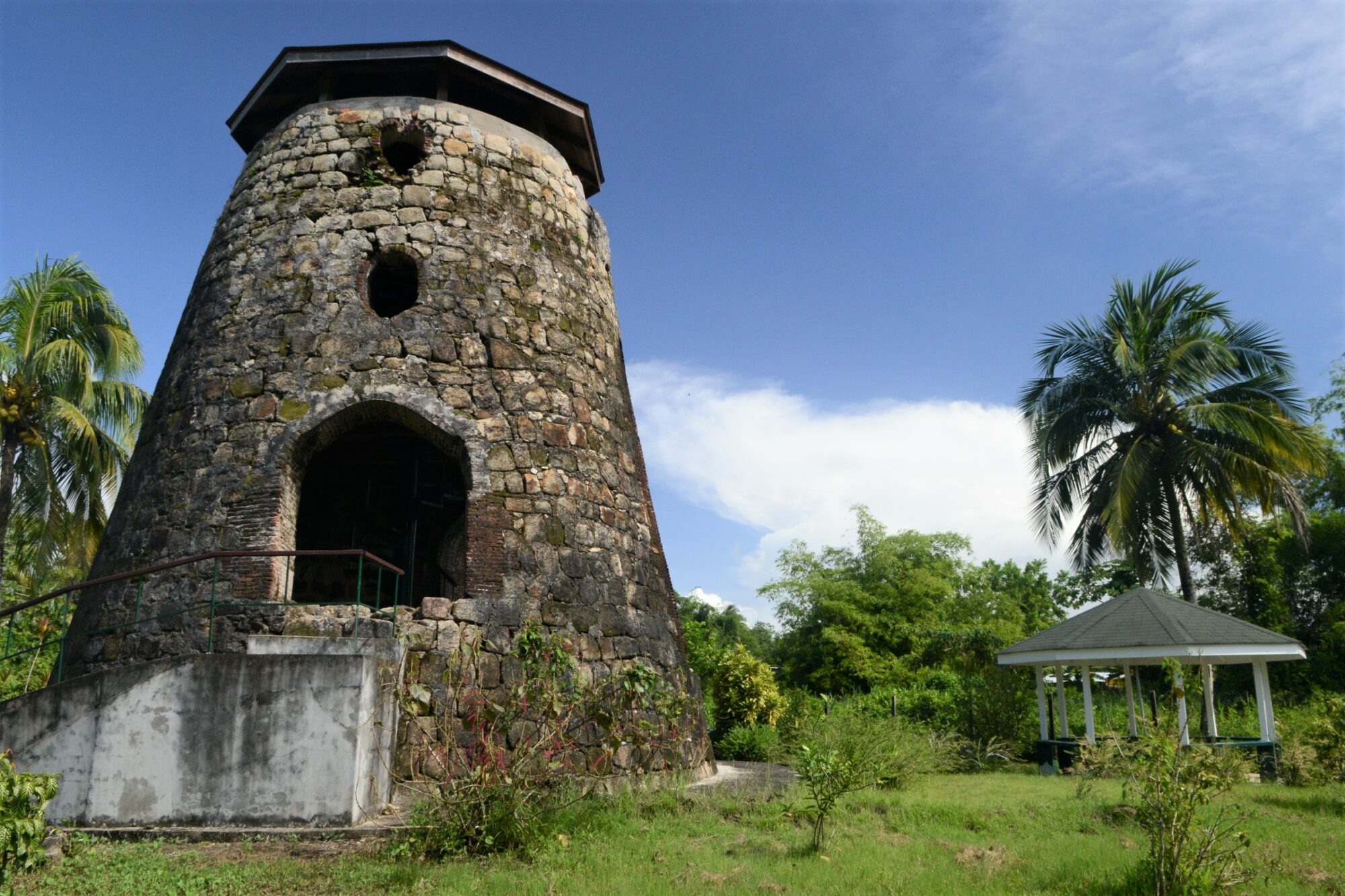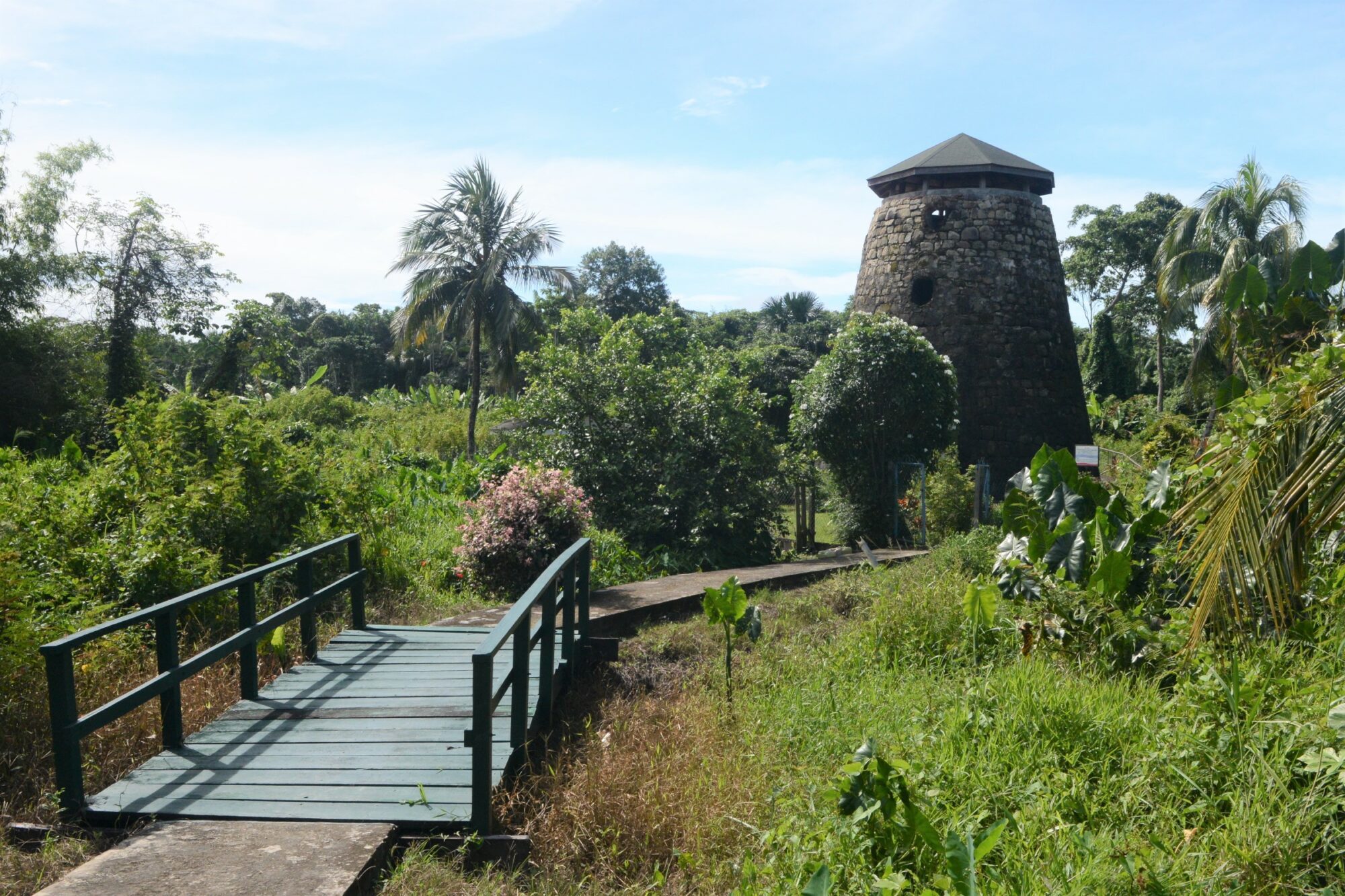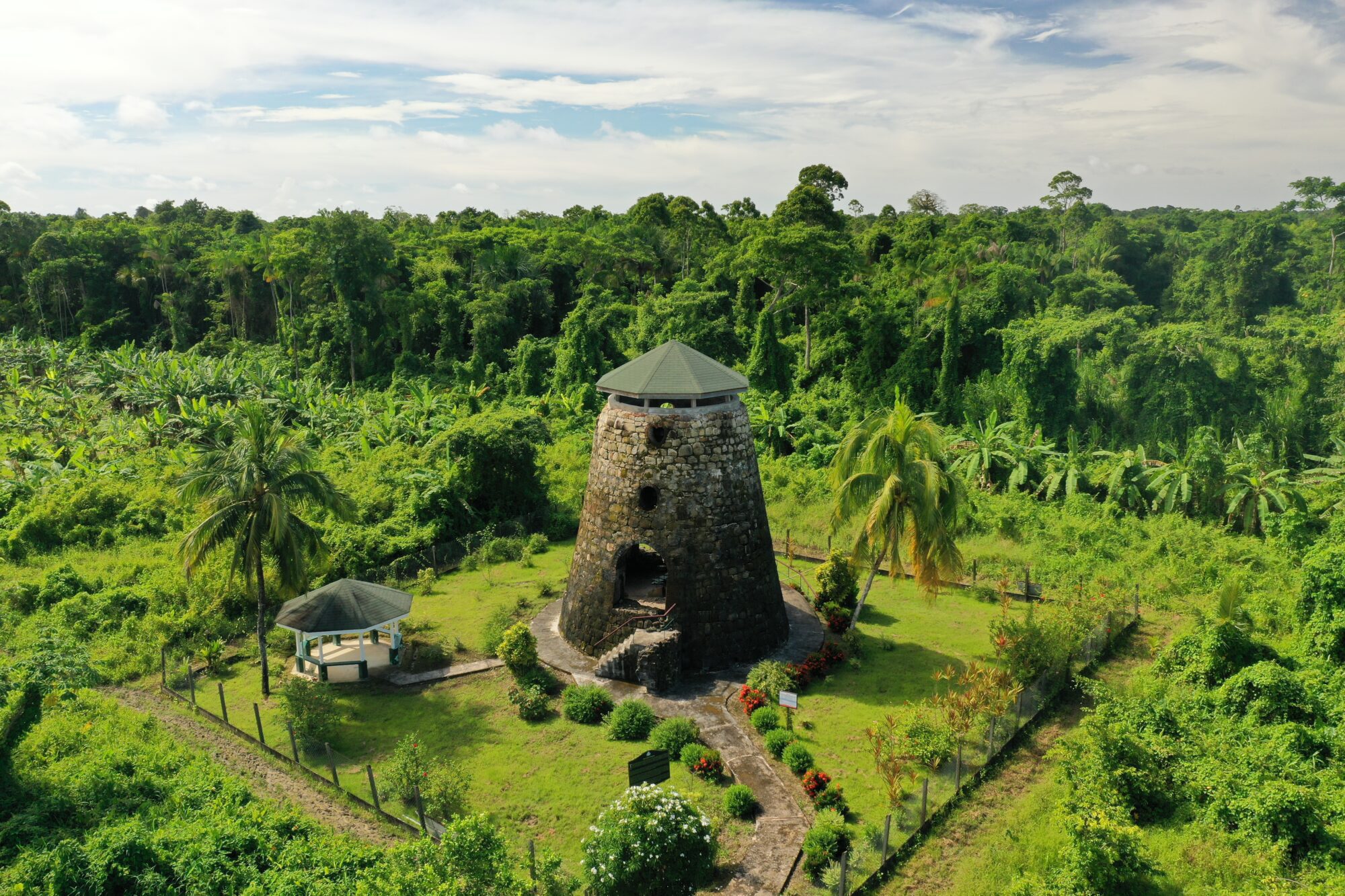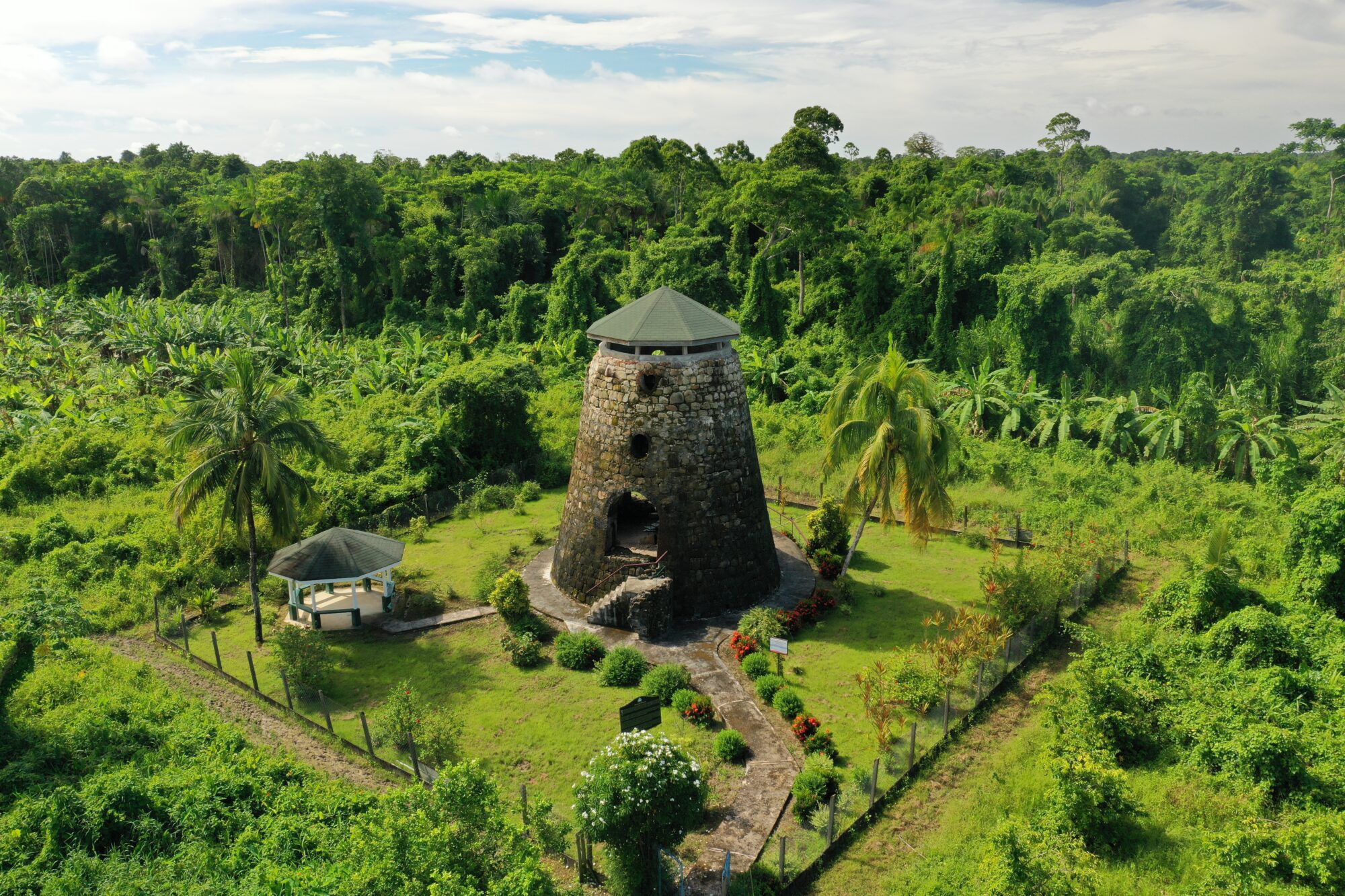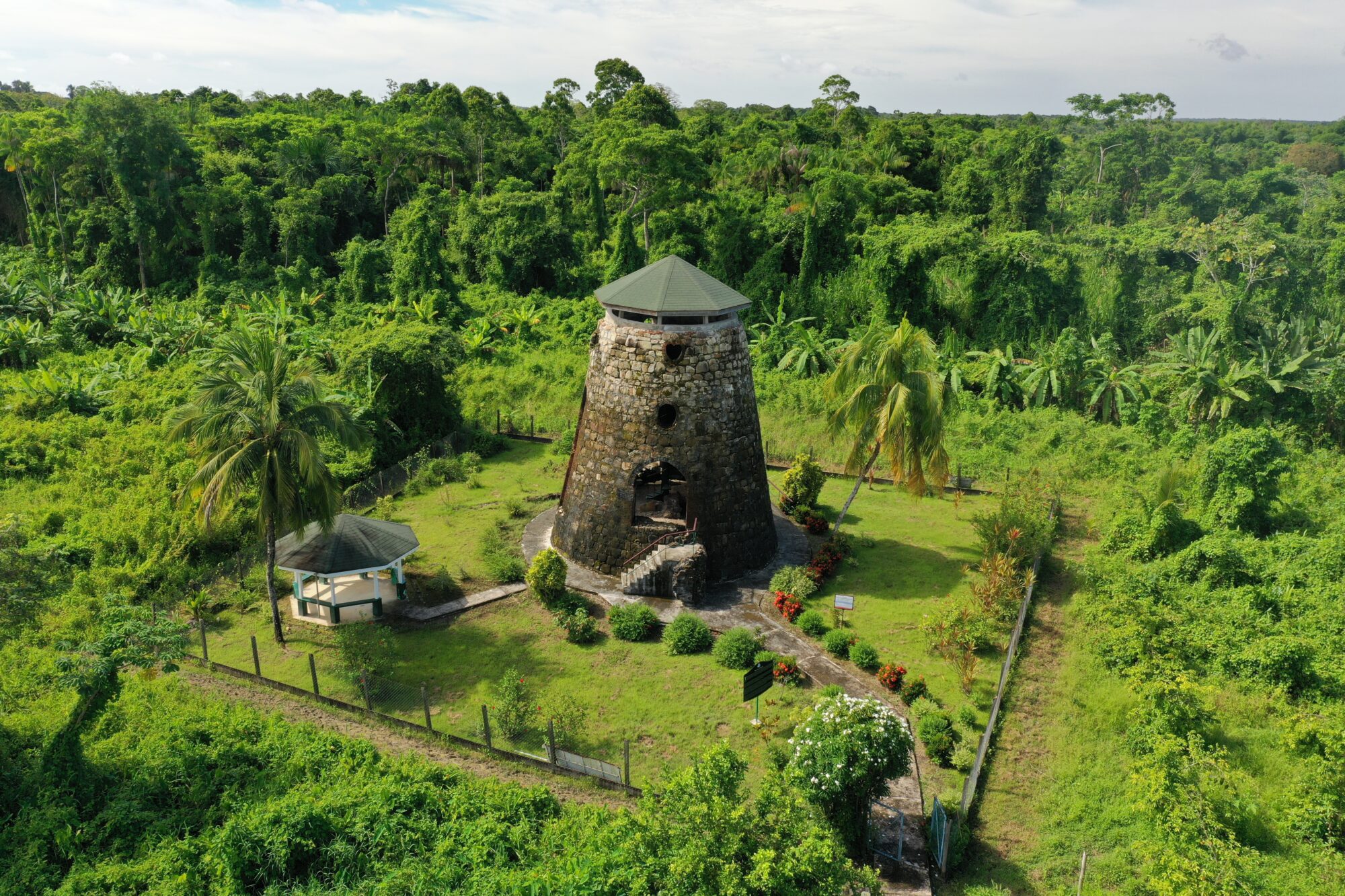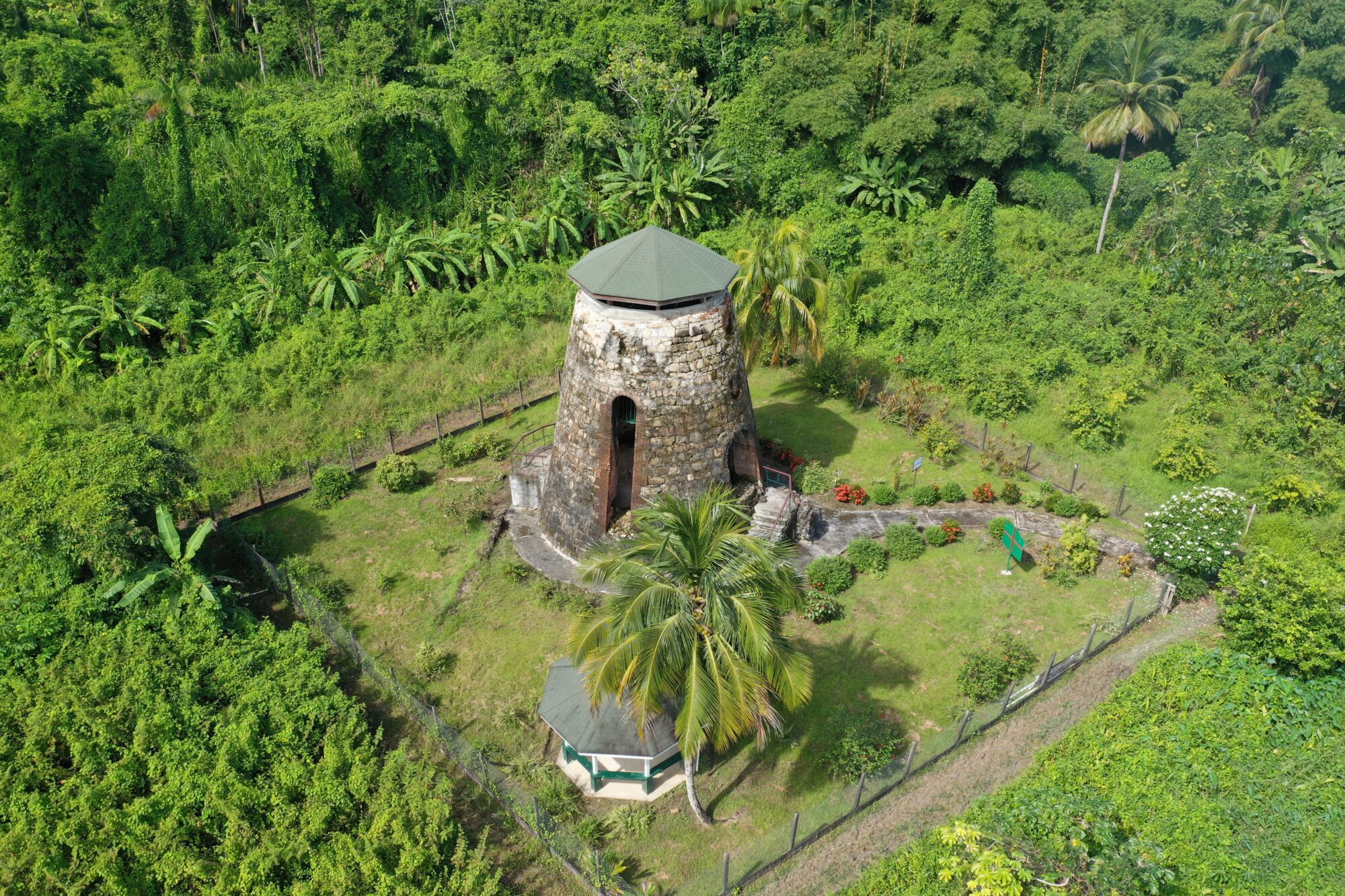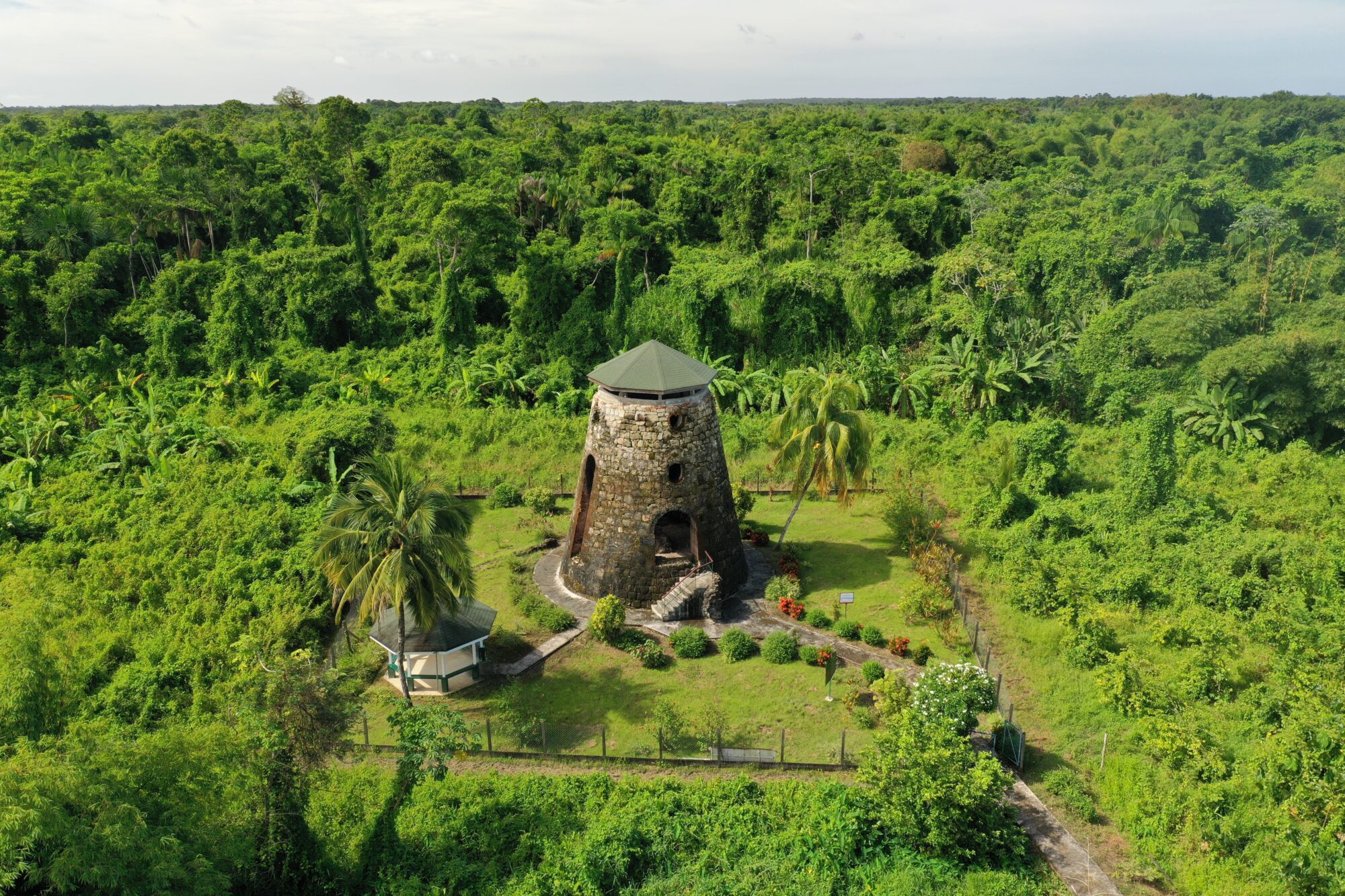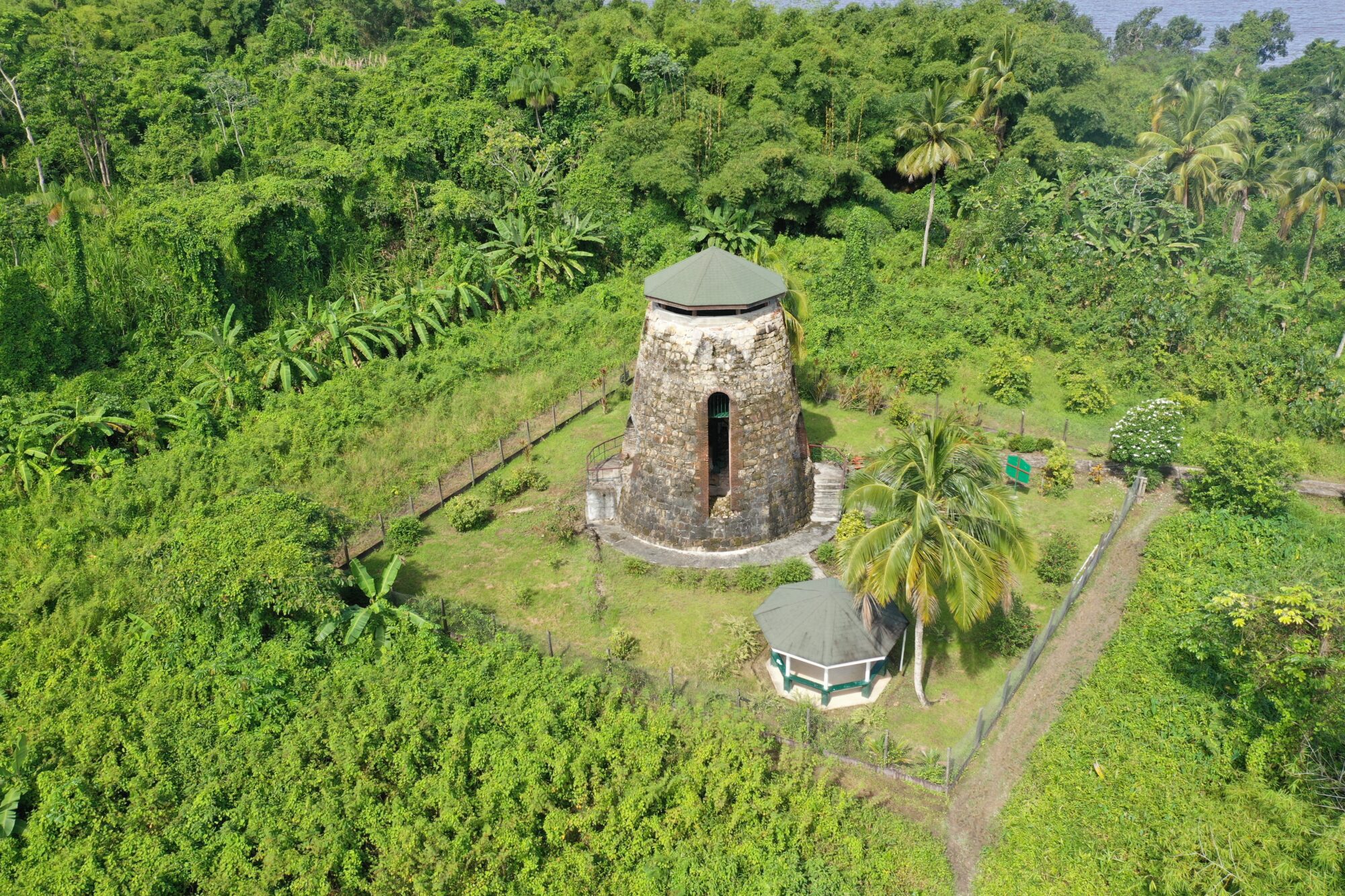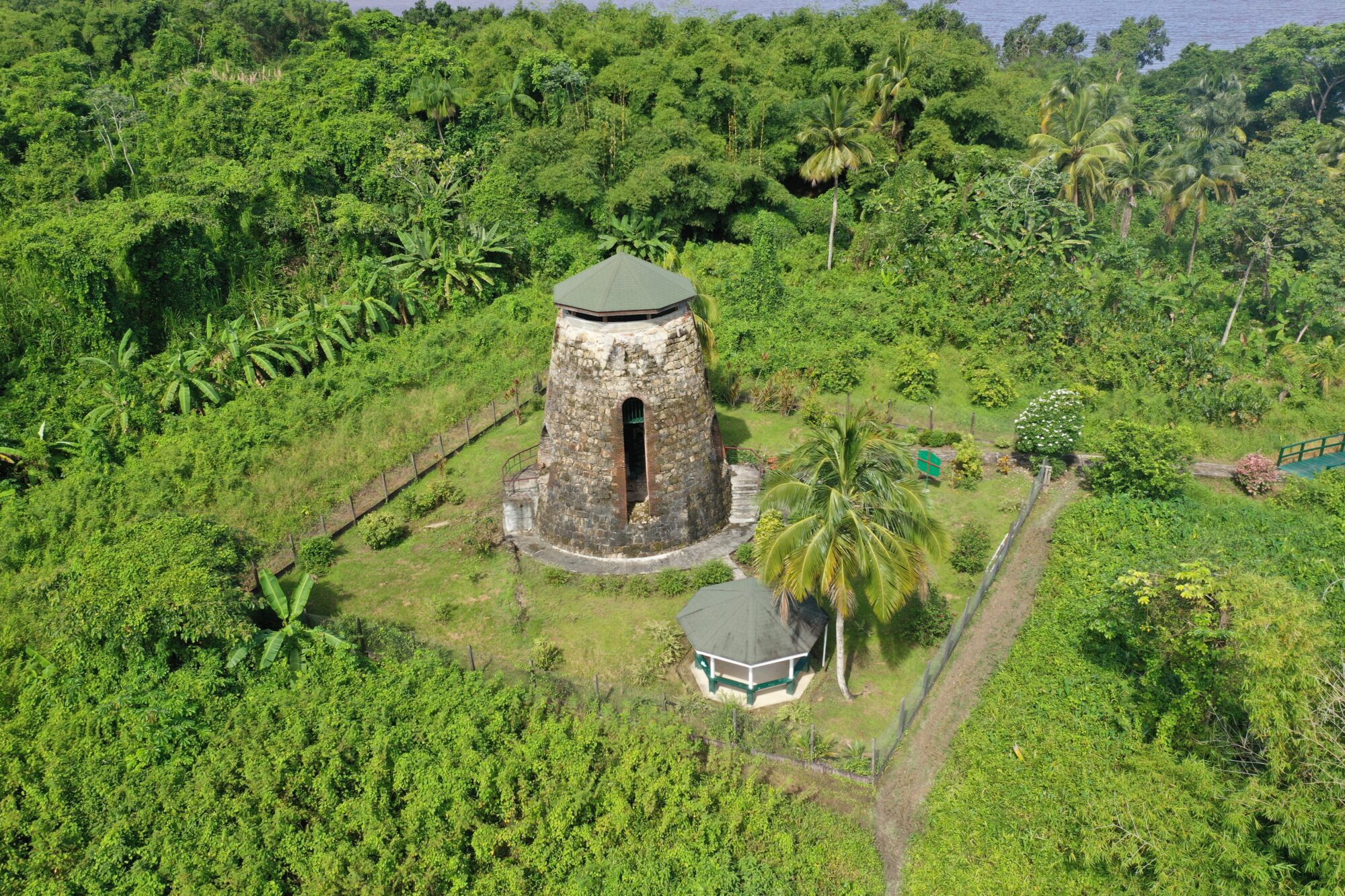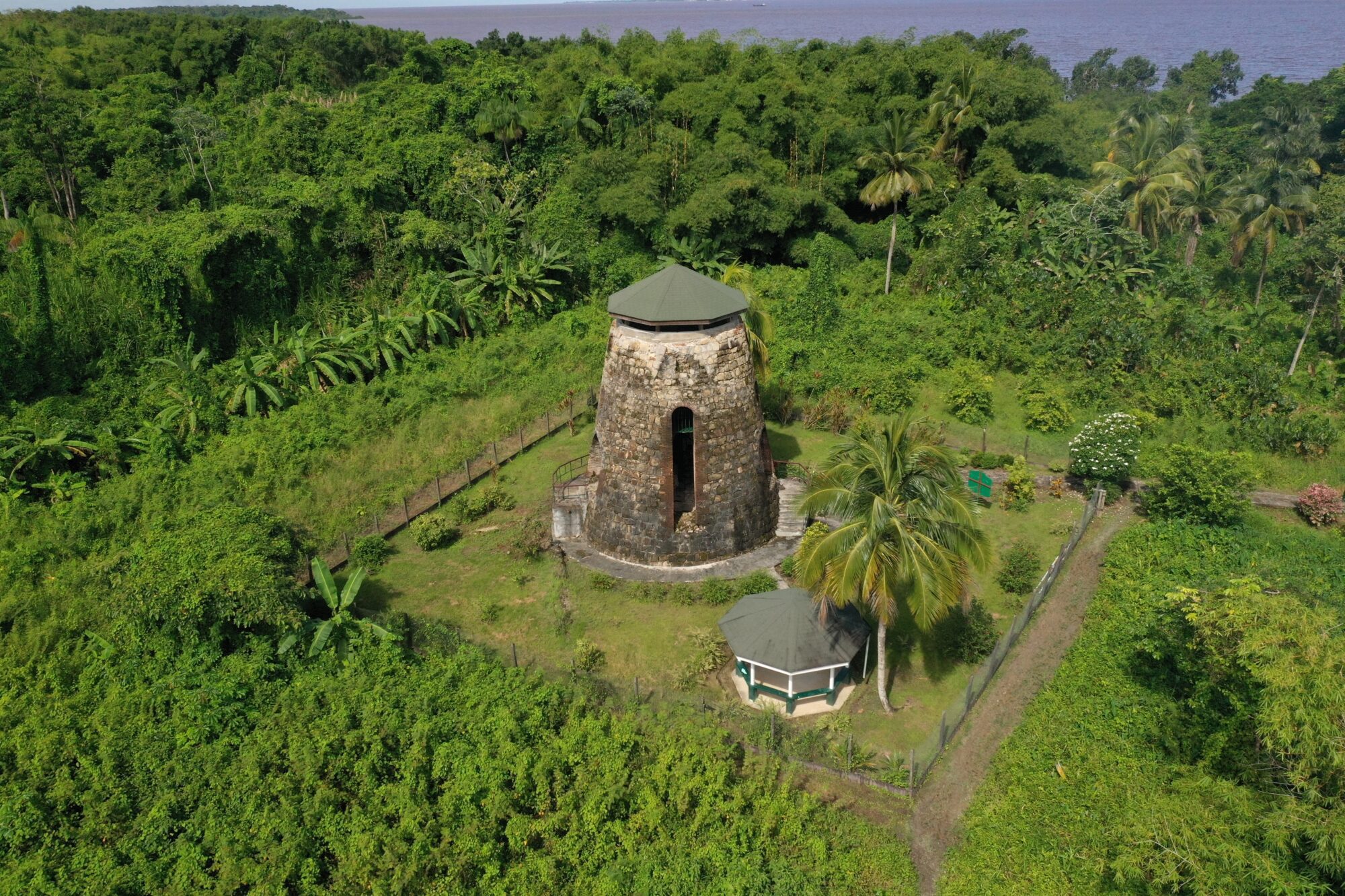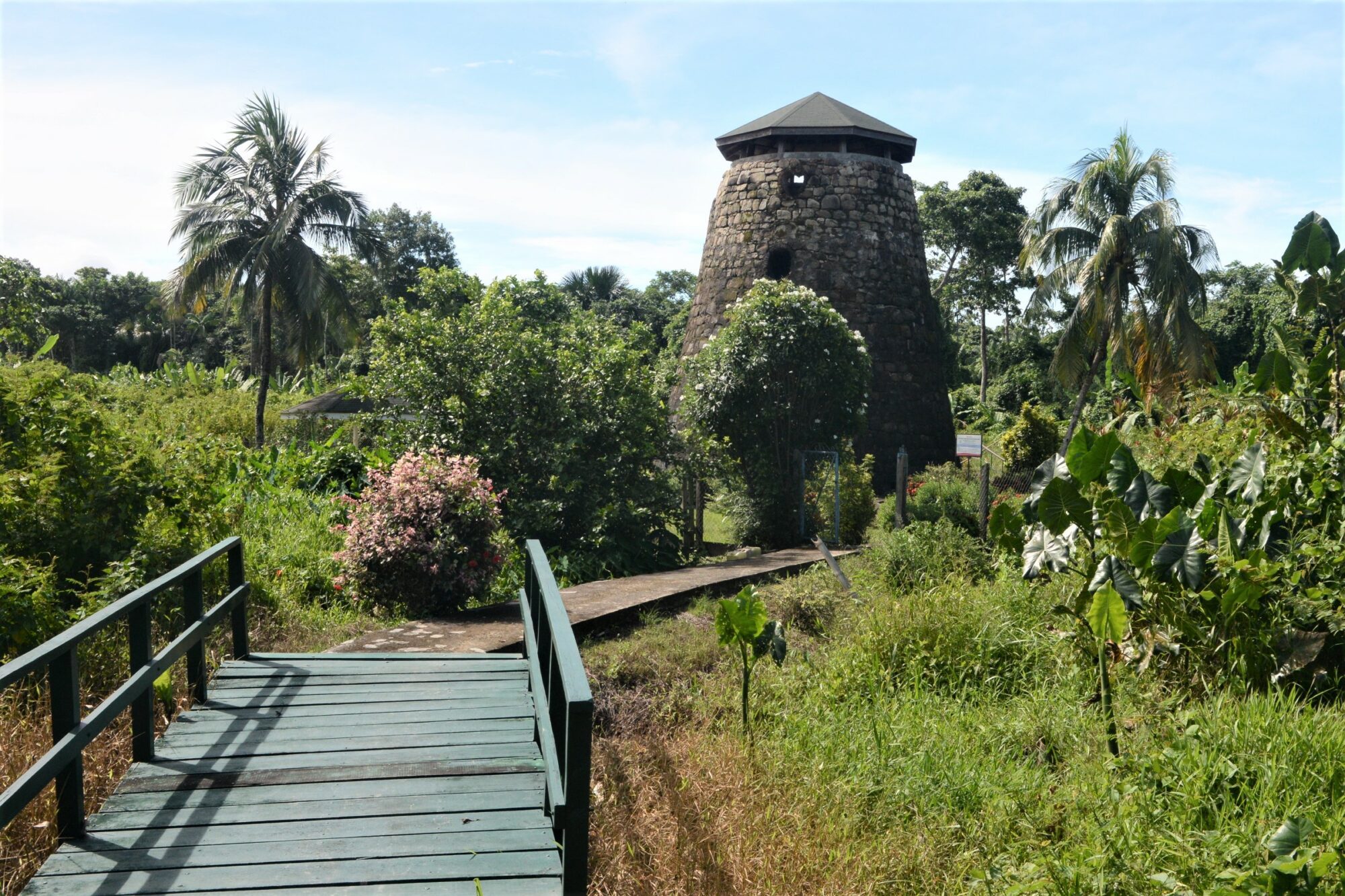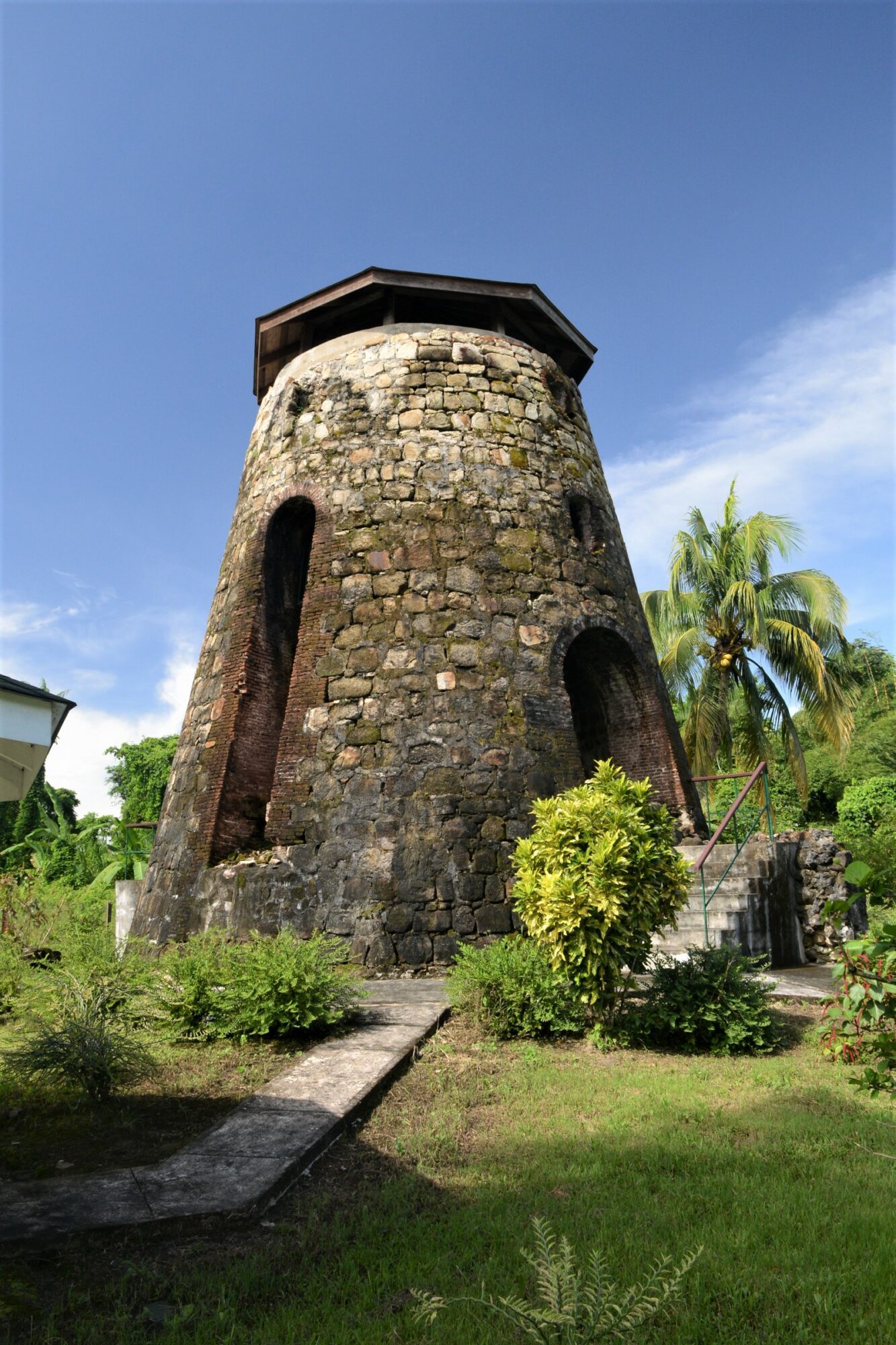Location: Hog Island, Essequibo
Classification: Historic Site (Civil Infrastructure)
Period/ Year Built: Circa 1768
Historical Background/Description:
Hog Island Windmill is located on the eastern side of Hog Island, approximately 14.5 kilometres (9 miles) from the mouth of the Essequibo River. This 18th century structure was the third windmill built by the Dutch during their occupancy of the Essequibo region. The first windmill was located near Plantation Nieuw Walcheren (New Walgeren) on the left bank of the Essequibo River; it was built in the 1740s.
The second windmill was completed in 1763 on Plantation Duynenburg which was located on the western section of Flag Island (Fort Island). This windmill was constructed in conformity with those in the West Indies and was described as the fourth best in the Caribbean. The structure did not function for long since it was plagued with a number of problems which included inadequate wind flow.
Circa 1768, Hog Island Windmill was built on Plantation Luyksberg. The windmill was 11 metres (36 feet) in height and sat on a 1.8 metre (6 feet) high mound. It had a ramp which measured 14 metres (46 feet) in length. The wall of the windmill was 76 centimetres (30 inches) thick. It is assumed that the windmill was built with clay bricks that originated from Fort Kyk-Over-Al. The structure which was designed similarly to the one on Plantation Duynenburg suffered the same faith as its predecessor. The Dutch West India Company (DWIC) later abandoned the concept of windmills on their plantations.
In 1977, what remained of the structure was discovered by a group of University of Guyana students visiting the Hog Island area on an off campus training exercise. The windmill was 209 years old at the time of its discovery and was said to be on a 1.8 metre (6 feet) high mound, with a cylindrical structure on top, approximately 8.5 metres (28 feet) high. In recent years, the National Trust, through its conservation efforts, has rehabilitated the windmill, allowing it to evolve into a visitor-friendly heritage site.
